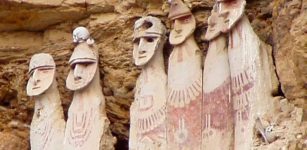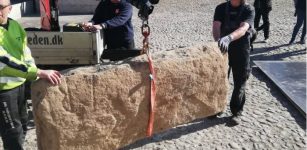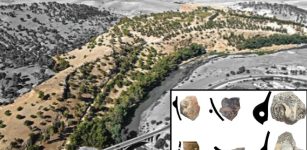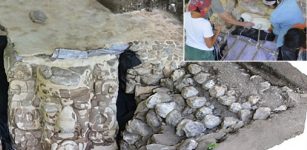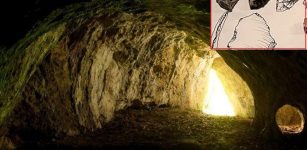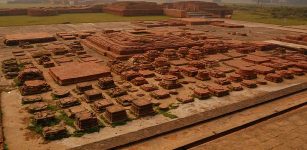Mysterious Bronze Age Burial Chamber Discovered In Devon, UK
Jan Bartek - AncientPages.com - A remarkable archaeological discovery has been made in Dartmoor National Park, located in Devon, southwest England. Archaeologists have uncovered a mysterious structure that is believed to date back thousands of years to the Bronze Age, approximately 4,000 years ago.
The structure appears to be a cist, a coffin-like, stone-built box or burial chamber used to hold the bodies of the deceased in prehistoric times. This particular cist was spotted two years ago, and its visibility was made possible due to the effects of erosion on the peat in which it lies.
Credit: Dartmoor National Park Authority
The rarity of cist finds from Bronze Age Britain (around 2300–800 B.C.) makes this Dartmoor discovery potentially significant. It holds the potential to provide valuable insights into the lives of Devon's inhabitants during this period.
The archaeological discovery in Devon is generating significant interest among experts and enthusiasts alike. This 'enthralling' find a burial chamber estimated to be around 4,000 years old, could potentially rival the significance of the 2011 discovery at Whitehorse Hill, where the remains of a young woman from around 1700BC were unearthed.
The previous Whitehorse Hill find was hailed globally for its revelations about life in the early Bronze Age, and there are high hopes that this latest discovery will prove equally enlightening. However, the true age and contents of the newly discovered chamber will remain a mystery until experts can conduct a thorough examination. DevonLive reported that this process may require a helicopter airlifting the artifact out of the peat.
"We have every potential for this to be something quite special," according to Radio Exe, archaeologist Lee Bray told a Dartmoor National Park Authority meeting.
"We don't know for certain if this is a cist, but it certainly looks like one. All the evidence we have points to it being a cist from the early Bronze Age."
Further investigations will be necessary to ascertain the true nature of the discovery and determine whether the potential cist contains any artifacts or remains. The waterlogged condition of the surrounding peat is a promising factor, as it suggests that any contents within the cist, such as artifacts or clothing, may have been preserved due to the lack of oxygen and moisture. Thorough examination and analysis will be crucial in shedding light on the significance of this find.
The Dartmoor National Park Authority is backing the excavation efforts, having set aside £90,000 from its reserves.
Authority member Andrew Cooper expressed his support at a meeting, saying: "There's no gain without pain. Now we know what Whitehorse Hill did for Dartmoor, I don't think we've got any other option. We might end up with peat on our faces because there's nothing there, but you never know unless you try."
How Marghwen, the woman buried at Whitehorse Hill, could have looked (Image courtesy: Dartmoor National Park Authority) © Dartmoor National Park Authority
Dr. Bray outlined three potential courses of action regarding the cist: leaving it to natural processes, attempting to prevent further erosion, or proceeding with an excavation. He dismissed the first option as irresponsible archaeology, noting that simply halting erosion would not eliminate the risk of air exposure damaging the contents. "They are deteriorating slowly as we speak," he warned.
Credit: Dartmoor National Park Authority
The second option, excavation, would entail significant costs. However, Dr. Bray argued that it would better serve both archaeological interests and the heritage of Dartmoor. The operation would commence with a thorough laser scan of the site to establish an accurate understanding of what's present, followed by surgically excising the relic 'like a piece of cake.' Weighing up to a hefty 300 kilograms a helicopter might be enlisted to transport it from the remote location due to the challenging access obstacles.
See also: More Archaeology News
Archaeologists are excited about the opportunity to study this ancient structure and unravel its secrets about the region's prehistoric past.
The precise location of the site remains undisclosed due to the "highly sensitive" nature of the project and the potential risk of the site being compromised or tampered with before it can undergo proper examination, according to a spokesperson from Dartmoor National Park. This decision to withhold the exact location highlights the delicate and confidential nature of the project, necessitating precautionary measures to ensure the site's integrity for thorough investigation.
The archaeological community eagerly awaits further insights into this intriguing find, which could shed light on the ancient cultures and practices of the region during the Bronze Age.
Written by Jan Bartek - AncientPages.com Staff Writer






